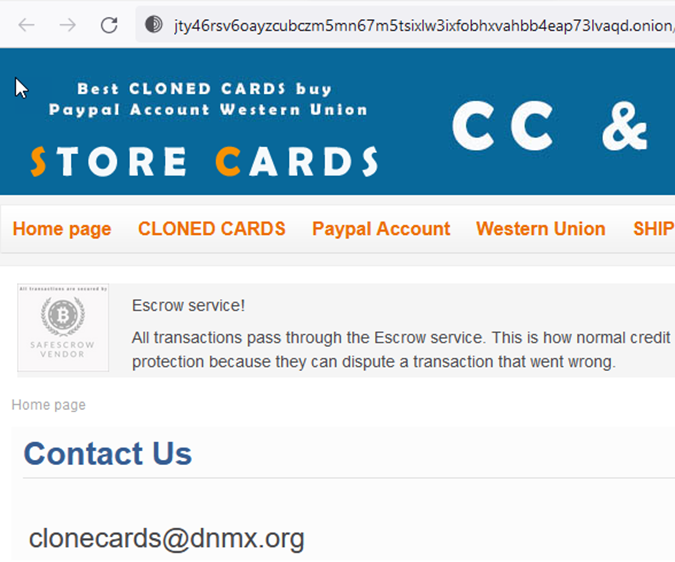Beyond the Veil: Tools and Techniques for Exposing Dark Web Secrets
The takedown of Genesis Market, a major dark web marketplace, by the FBI and Dutch National Police in April 2023 (“Operation Cookie Monster”) showcased the effectiveness of Open-Source Intelligence (OSINT) in investigations targeting this hidden realm. While often perceived as anonymous, the dark web leaves traces that skilled investigators can leverage to identify individuals involved in its activities.
Cracking the Code: Exploiting Vulnerabilities in the Dark Web
While technical vulnerabilities can sometimes expose a dark website’s true location, this approach falls outside the traditional realm of OSINT (Open-Source Intelligence) due to its ethical and legal complexities. Exploiting vulnerabilities often requires advanced skills and tools, making it an uncommon and resource-intensive method.
Fortunately, alternative methods offer reliable and accessible options for identifying dark websites. Analyzing SSL certificates and SSH keys used by operators can provide valuable clues. Services like Shodan and Censys can link these digital signatures back to the server’s IP address, potentially revealing its physical location. However, it’s important to note that operators often take countermeasures to anonymize their certificates and keys, making this approach not foolproof.

Following the Money Trail: Unmasking Dark Web Actors with Blockchain Analysis
Cryptocurrency tracing is the process of tracking the movement of cryptocurrency transactions across the blockchain, a public ledger that records all crypto transactions. While some may believe cryptocurrency is anonymous, transactions are inherently traceable due to the public nature of the blockchain. This allows investigators and analysts to follow the flow of funds and potentially identify individuals or entities involved in illicit activities.
Here are some key points about cryptocurrency tracing:
Methods:
- Blockchain analysis tools: These tools allow tracing transactions based on addresses, identifying patterns, and even clustering related addresses.
- Following exchanges: Many cryptocurrency exchanges require KYC (Know Your Customer) verification, meaning they identify users. Investigators can track funds to specific exchanges and potentially obtain user information through legal channels.
- Mixing services: While these services aim to obfuscate transactions, advanced analysis can sometimes identify their use and de-anonymize funds.
- Law enforcement cooperation: International cooperation between law enforcement agencies allows tracing transactions across borders and jurisdictions.
While anonymity attracts many to the dark web, its reliance on cryptocurrency for transactions leaves a digital footprint. This opens a window for investigators to utilize blockchain analysis tools, shedding light on the individuals behind illegal activities. Just like banks enforce ID verification (“Know Your Customer” or KYC) to prevent money laundering, many cryptocurrency exchanges now require similar identification. This provides a crucial link between anonymous transactions and real-world identities.
Traditionally, blockchain analysis tools were cost-prohibitive for individual investigators. However, platforms like Breadcrumbs (https://www.breadcrumbs.app/) are changing the game by offering affordable options, including a free plan. This democratizes access to powerful investigative tools, potentially aiding in dismantling dark web operations.

Benefits:
- Identify criminals and recover stolen funds: Tracing can help identify individuals and groups involved in cybercrime, fraud, or other illegal activities. This can lead to arrests and the recovery of stolen funds.
- Disrupt illegal markets: By tracking transactions to and from dark web marketplaces or other illicit entities, authorities can disrupt their operations and make it harder for them to operate.
- Investigate money laundering: Tracing can help identify patterns consistent with money laundering activities, aiding investigations and prosecutions.
How to Find the Criminals in Dark Web – Lets Identify How The Customers Find them
Consider operating a food truck that constantly changes locations due to city ordinances, limiting your presence in any spot to twice a month. How would you establish brand loyalty and inform potential customers about your daily location?
In a scenario like this, you’d likely encourage customers to connect with you on social media platforms such as Facebook, follow your updates on Twitter, or visit your website to stay informed about your current location. Interestingly, a similar dynamic exists on the dark web.
While the dark web offers anonymity, it lacks stability and security. Law enforcement has successfully shut down major markets like Silk Road, AlphaBay, Hansa, Wall Street, and more recently, Genesis. The Tor network, utilized for dark web activities, faces disruptions due to frequent Denial of Service attacks. Imagine trying to run a business and maintain a stable income in such an environment.
To achieve stability and resilience, sellers on the dark web often operate on multiple marketplaces and provide direct contact methods. While this strategy makes sense for them, it becomes valuable for OSINT (Open Source Intelligence) practitioners. Now armed with these contact methods, known as “selectors,” OSINT practitioners can leverage their knowledge, experience, and resources to locate these sellers on the internet. The example below illustrates how an email address from a dark website can be traced to an internet site using Google.

Monitoring The Forums for OSINT
While anonymity shrouds the dark web, online forums offer a glimpse into the world behind the scenes. Here, individuals involved in these activities engage in discussions, ask questions, and even develop a sense of community. This online interaction, however, can unwittingly leave digital footprints that skilled investigators can leverage.
Analyzing language patterns, specific terminology, and even unique phrases used by participants can provide valuable insights into their true identities. OSINT practitioners, trained in extracting information from publicly available sources, can utilize these digital traces to build profiles, understand motivations, and potentially identify real-world personas. However, it’s crucial to acknowledge the ethical considerations involved in using personally identifiable information gleaned from online activity, even if publicly available.
Breached Data Analysis
Even when an email is associated with an anonymous service, the user might have employed it across various platforms such as forums and social media. If you possess both legal and ethical clearance to utilize breach data in your investigative work, you may successfully link an online persona to real-world details like a person’s name and physical address.
An illustrative instance of a beneficial leak for certain investigators was the disclosure of 10GB of data from multiple VPN providers in 2021/2022, including SuperVPN, GeckoVPN, and ChatVPN. This dataset encompassed complete names, billing particulars, and potentially distinctive identifiers related to the devices in use, including the IMSI of mobile devices.

Unveiling the Future: AI and Machine Learning Reshaping Dark Web Investigations
While the techniques discussed here have proven effective in dismantling dark web markets, the future of investigations promises further advancements leveraging emerging technologies. The most significant potential lies in the integration of Artificial Intelligence (AI) and Machine Learning (ML) into OSINT practices.
Imagine using AI-powered web scraping tools that gather and analyze vast amounts of data from diverse sources at lightning speed. This data can then be fed into ML algorithms, meticulously trained to discover intricate patterns and connections hiding within. These groundbreaking methods hold the potential to revolutionize investigations, freeing up valuable time and resources for law enforcement and security professionals. With less time spent on data acquisition and analysis, they can delve deeper into critical aspects of investigations, potentially leading to faster breakthroughs and more comprehensive understanding of dark web activities.
